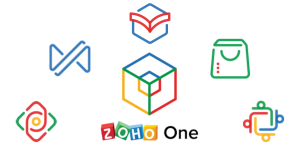Mastercard’s “Priceless” campaign has had a significant impact on the company’s image over the past two decades and continues to this day.
Service Metrics Calculator, which you may use for nothing
However, What Made This Message So Effective?
It encapsulated the concept of client satisfaction. While items have a set price, excellent customer experiences have an intangible value that businesses and their consumers both share. A five-fold increase in income is seen by organisations who give an exceptional client experience over those that deliver a subpar one, according to research.
The source of this image
Even though customers should think their encounter was “priceless,” businesses are still attempting to figure out how much that experience is worth. Irony, indeed! To aid marketing and customer service teams in their planning and decision-making. Calculating the return on investment (ROI) of customer experience efforts is critical.
If you haven’t already, here are a few more reasons why you should keep an eye on your customer’s experience ROI.
What’s the point of calculating customer experience ROI?
Sometimes, connecting your customer experience measurements to financial data raises as many questions as answers. When it comes to client retention, can a faster response time to emails actually help? If your checkout procedure was more efficient, how much extra money might you expect from your customers?
The easiest method to answer these kinds of queries is to use machine learning and analytics based on feedback from customers. Voice of the customer feedback software lets organisations understand their customers’ experiences at scale. Revealing the primary drivers of various customer experience indicators. The return on investment (ROI) of your company’s customer service strategy may be calculated using a range of measures linked to customer spending data.
Let’s take a look at the metrics you’ll need to track if you want to calculate customer experience ROI.
ROI Metrics for Customers’ Satisfaction
NPS®, CSAT, CES, and First Response Time are just some of the customer experience metrics you may already be tracking. These indicators are useful for gauging the health of your customer experience programme, but they don’t necessarily tell you how each one affects your business. Does a reduced churn rate follow from a greater NPS, for example? If so, by how much?
There are a number of measures that may help your leadership team better understand your customer experience programme, including the ones listed below. For management, this information lets them see if their company has been expanding and producing money.
Total Cost of Ownership
Client Lifetime Value estimates how much money a single customer will spend over the course of their relationship with your organisation. Calculated by multiplying customer value with the average customer lifespan.
The rate at which customers leave
Churn rate is the percentage of consumers that will either cancel or quit your business within a specified time frame. Divide the number of consumers that cancelled their subscription by those who signed up. However, if you want to save some time, you may use our convenient churn rate calculator.
The Price of Providing Assistance
Expenses unrelated to production or manufacturing are referred to as “support costs.” Quality assurance and customer service initiatives are included in this category. Your client satisfaction indicators should be taken into account when comparing these charges with your costs.
The average amount of money spent each transaction
Average transaction size is computed by dividing overall income for a period by the total number of sales made during the same period of time. Customers’ shopping habits and product preferences can be gleaned this way.
The average cost of a contract
For subscription-based businesses, average contract value may be a better metric than transaction volume. A good thing is that you may divide your overall number of new customers by how much you’ve spent on signing new consumers within a certain time.
In order to connect customer experience to the metrics above, you need to combine your data such that each customer’s profile has contextual information. A CRM or a data analytics tool may often be used to do this.
Here’s an illustration of what I mean.
We can see patterns in the data from this point on. So we know why one consumer spends thousands of dollars while another simply leaves.
How to Boost Your Return on Investment in Customer Service
Customer experience analysis might begin with NPS or CSAT scores for companies that are just getting started. Without further investigation, it is hard to determine what measures to take to enhance overall performance by monitoring these data over time.
The following are some ways in which you may better understand your consumers and get a higher return on your customer experience programmes.
Segment your customer base.
Grouping clients into categories based on their personal features and habits helps you better understand the people you work with. Customers aren’t all the same, and understanding diverse buyer personas might help you find new ways to grow your business.
Here are several methods in which you may divide your consumer base into distinct subgroups.
Product/Plan Average Transaction Size/Purchase Contract Value
The number of visits per day or per month.
The title of the position, the location, and the age of the employee
2. Analyze qualitative data with the use of text analytics.
Text analytics software can evaluate qualitative data from surveys, customer chats, online reviews, social media dialogues. More instead of manually combing through support cases and listening to phone recordings. This technique saves you the time and effort of having to go through every item of consumer feedback one at a time.
Look back in time to see if there are any recurring patterns.
Analyze the data you’ve obtained and seek for trends that show what has succeeded in the past. Yes, all clients in a certain market sector talk about the same thing. A specific segment of your customer base has greater turnover rates than others. What did the qualitative data tell about your brand’s perception?
With this perspective, you can compare your customer experience programme to the KPIs you’re tracking. As a result, you’ll have a better understanding of what projects are working. Where you may make adjustments for greater success.
Identify the Possibilities That Will Have the Greatest Impact on Your Business
In order to have the most influence on a customer’s experience, seek for a specific buyer persona or group that you can help. You may, for example, target a high-value category with a high turnover rate, but where there are still many opportunities to please customers.
It’s at this point that your customer experience measurements come into play. What other initiatives have worked for you in the past with the same demographic? Your next marketing campaign should be tailored for your new target audience based on quantitative and qualitative data.
Creating a Customer-Centered Business
Providing a positive customer experience. It’s not only a cool metric to keep track of for your business. Prioritizing future projects, gaining support for customer-centricity, and boosting general team morale are all benefits of this approach.
Connecting measurements that you already track to financial measures given in this post is the best way to calculate customer experience ROI. You may better gauge the performance of your customer experience programme by comparing contextual data to client comments.
Learn about the newest customer experience trends by reading on..








